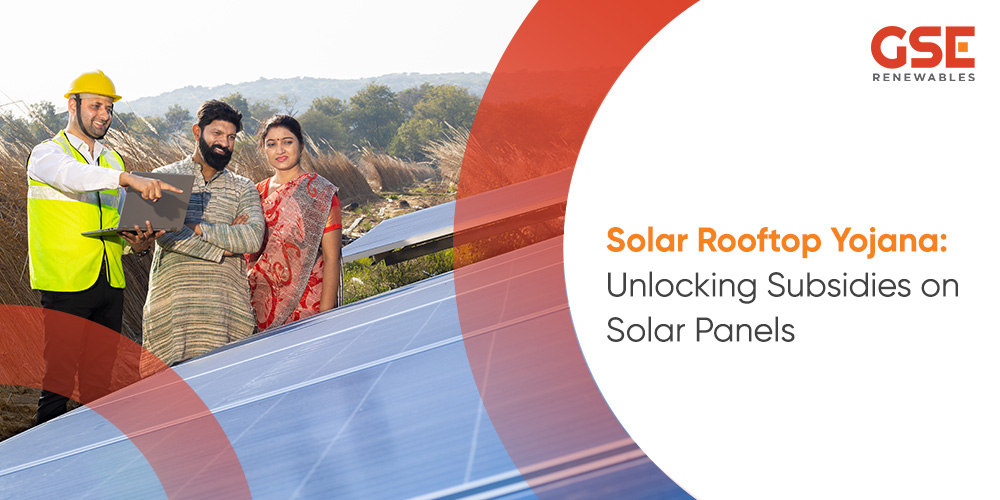500 kW Solar Power Plant Cost in Gujarat: Complete Price & Savings Guide
Nov 26

As the world shifts towards sustainable energy sources, solar power has emerged as a viable and eco-friendly solution. India, being a country blessed with abundant sunlight, has recognized the potential of solar energy and has been actively promoting the adoption of solar power systems. One such initiative by the Indian government is the Solar Rooftop Yojana, which aims to unlock subsidies on solar panels and make renewable energy accessible to more people.
Solar energy, harnessed from the sun’s rays, stands as a remarkable renewable resource with the potential for diverse applications. India’s strategic geographical location blesses the nation with ample tropical sunlight all year round. Through the installation of solar rooftop systems, individuals can tap into this energy reserve and utilize it for residential, commercial, and industrial needs under solar rooftop scheme. Embracing solar power not only brings about economic advantages but also contributes to a cleaner environment by reducing carbon footprints.
According to research, India’s land area receives an astounding 5000 Trillion kWh of solar energy each year, with many regions basking in a daily average of 4-7 kWh per square meter. Despite this abundant solar potential, the high cost of rooftop solar installation has hindered its widespread adoption, making it unaffordable for the majority of Indians. The Ministry of New and Renewable Energy (MNRE) estimates the average cost of a rooftop solar system, connected to the grid, to be around 75 per watt.
The Solar Rooftop Yojana is a solar panel government scheme program designed to encourage residential, commercial, and industrial establishments to install solar power systems on their rooftops. By generating clean energy from solar panels, individuals and businesses can reduce their dependence on traditional fossil fuels and contribute to a greener environment.
One of the primary benefits of the Solar Rooftop Yojana is the potential for significant savings on electricity bills. Solar panels convert sunlight into electricity, providing a self-sustaining energy source. Excess energy generated can be fed back into the grid, earning credits or revenue for the system owner.
Solar energy is clean and renewable, producing no harmful emissions or greenhouse gases. By opting for solar panels, individuals can actively participate in the fight against climate change, reducing their carbon footprint and preserving the environment for future generations.
With solar power, individuals and businesses can become more energy independent. By generating their electricity, they are less reliant on utility companies and are shielded from fluctuations in electricity prices.
To participate in the Solar Rooftop Yojana, certain eligibility criteria must be met. These may vary from state to state but generally include aspects such as ownership of the rooftop, structural stability, and available sunlight exposure.
Applicants need to register for the program by submitting their details and relevant documents to the designated authorities.
A technical team will conduct a site survey to assess the rooftop’s suitability for solar panel installation and determine the system size required.
Once the site survey is completed, authorized vendors will proceed with the installation of the solar panels and related equipment.
After the installation is completed, a final inspection will be carried out by the government or its authorized representatives to ensure compliance with the program’s standards. Once approved, the subsidies are unlocked.
Despite the program’s numerous advantages, some challenges have hindered its widespread adoption. Let’s explore these challenges and potential solutions
The initial cost of setting up a solar power system can be a significant barrier for many individuals. Offering low-cost financing options and subsidies for the installation can address this issue.
Lack of awareness about solar energy and the benefits of the Solar Rooftop Yojana can deter potential applicants. Conducting awareness campaigns and providing educational resources can bridge this gap.
Ensuring the quality and standard of solar panel installations is crucial for maximizing energy generation. Implementing strict quality control measures and certifications for vendors can resolve this concern.
Mr. Sharma, a resident of Delhi, installed solar panels on his rooftop through the Solar Rooftop Yojana. Within a year, he witnessed a substantial decrease in his electricity bills by up to 70%, and the surplus energy generated earned him credits, further reducing costs.
A textile manufacturing unit in Gujarat integrated solar panels into its operations through the Solar Rooftop Yojana. By doing so, they not only reduced their environmental impact but also achieved long-term cost savings, making their business more sustainable.
The Solar Rooftop Yojana is just the beginning of India’s journey towards a greener and more sustainable future. As technology advances and costs reduce, solar energy is expected to become even more accessible to all segments of society.
The Solar Rooftop Yojana has emerged as a game-changer in India’s pursuit of sustainable energy. By unlocking solar panel government subsidy , it empowers individuals and businesses to harness the power of the sun and contribute positively to the environment while enjoying long-term financial benefits.

Our Blogs With a combined experience of over 250 years and the successful management of 30 MW of solar energy projects, GSER offers the most efficient solutions. 500 kW Solar Power Plant Cost in Gujarat: Complete Price & Savings Guide What is a 500 kW...
Read MoreOur Blogs With a combined experience of over 250 years and the successful management of 30 MW of solar energy projects, GSER offers the most efficient solutions. Why Solar Power Is Booming in Gujarat for Businesses Over the last decade, Gujarat has become one of...
Read MoreOur Blogs With a combined experience of over 250 years and the successful management of 30 MW of solar energy projects, GSER offers the most efficient solutions. Solar Opex Model: For Rooftop Solar with No Upfront Investment What is the OPEX Model in Solar Energy?...
Read More